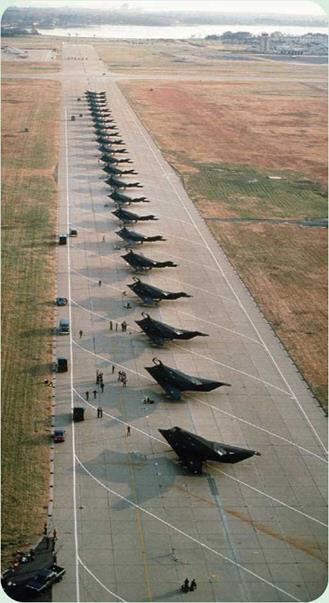The Space Age
In 1947, a WAC-Corporal rocket reached a height of 244 miles (390 kilometers) above the White Sands testing ground in New Mexico. This flight opened the door to space-and encouraged government interest-because it showed that rocket technology could now launch satellites. Ten years later, the Russians launched Sputnik 1, the first artificial satellite. So began the space race between the United States and the Soviet Union. Key figures
in the two rival space programs were Robert Gilruth (1913-2000), appointed to direct the U. S. Mercury astronaut program in 1958, and Sergei Korolyov (1906-1966), who led the Soviet design team behind the Sputnik program.
Spaceflight was front-page news through the 1960s as the United States and the Soviet Union competed to send astronauts into orbit and probes to the planets. Public interest in space reached a peak during the Apollo Moon landings (1969-1972).
Since the 1970s, spaceflight has developed as a multinational scientific activity and a commercial business.
LIFE BEYOND EARTH
The Planetary Society was founded in 1980 by Carl Sagan, Bruce Murray, and Louis Friedman. Its aim is to "inspire and involve the world’s public in space exploration" and to search for extraterrestrial life (life beyond Earth). A worldwide program known as SETI (Searching for Extra-Terrestrial Intelligence) aims to collect evidence of life on other worlds through detecting radio signals and other forms of transmissions. Currently, Earth is the only planet known to support life, although scientists speculate that life could exist on Earth – type planets orbiting other stars.
ч_______________ J
Most satellite launches, for example, are intended for communications and entertainment, such as TV broadcasting. Spaceflight has become almost routine, although tragedies-such as the losses of two U. S. Space Shuttles, Challenger in 1986 and Columbia in 2003-reminded people just how dangerous space can be. Robot space probes have made astonishing voyages, not only to planets but far beyond our solar system. In 1990, NASA’s Voyager 1 probe took a photograph of Earth from a distance of 4 billion miles (6.5 billion kilometers) more than twelve years after it set out on a voyage through space that may well last hundreds of years.
Since the end of the Apollo program in the early 1970s, the most significant manned spacecraft has been the U. S. Space Shuttle. First launched in 1981, the Space Shuttle flies regularly into orbit, delivering supplies to the International Space Station.
The future of spaceflight will probably see a return of astronauts to the Moon and possibly a manned exploration trip to Mars. A lunar base might be in existence before the middle of the twenty-first century, and the discovery of water on Mars could even make a Martian colony a possibility.
——————————————— N
SEE ALSO:
• Apollo Program • Astronaut
• Future of Spaceflight • Rocket
• Satellite • Space Probe
___________________________ У
|
A |
 |
space probe is a robot spacecraft sent far into space. To probe means to investigate, and that is what space probes do. Scientists have sent space probes to the Moon, to the planets, and beyond the solar system into deep space. A probe equipped with sensors, cameras, computers, and a radio transmitter can-within a few hours-discover more about a distant planet than has been gathered in centuries of Earth-based astronomy.
A robot space probe needs no air, water, or fuel during its journey through space. Its power comes from tiny nuclear plants or from solar cells that convert sunlight to electrical energy. Once set on its course, a probe can continue to travel through space for years, sending images and data back to Earth.
Flyby probes pass close to their tar – get-a planet, a comet, or an asteroid. Orbital probes go into orbit around a planet or the Sun. Landers descend through the atmosphere to the surface.












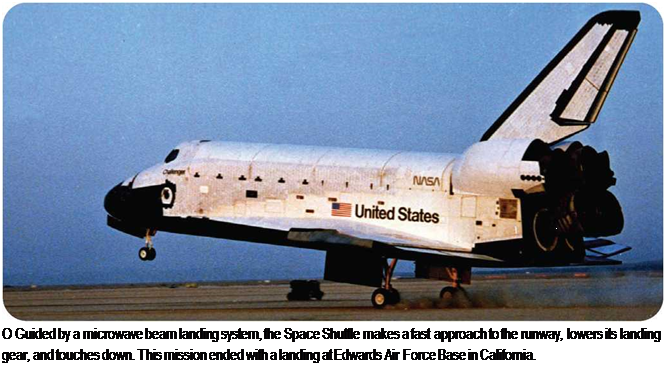

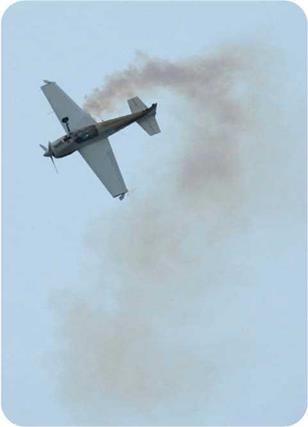
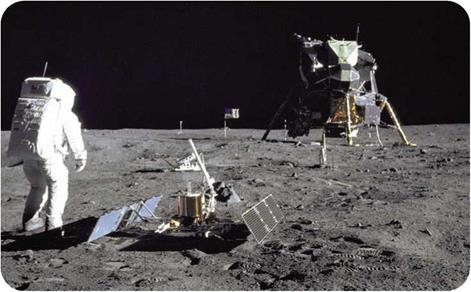 О Gravity is weaker on the Moon than on Earth because the Moon is smaller and has less mass. Astronauts on Apollo missions set up scientific experiments on the Moon to find out about its force of gravity and other aspects of its environment.
О Gravity is weaker on the Moon than on Earth because the Moon is smaller and has less mass. Astronauts on Apollo missions set up scientific experiments on the Moon to find out about its force of gravity and other aspects of its environment.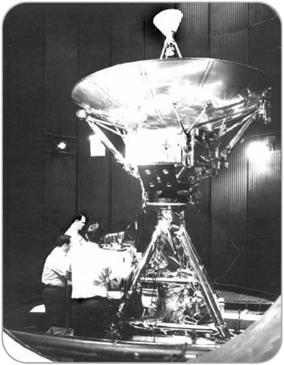
 pilot has only one opportunity to land the spacecraft-because it has no engine power for landing, the craft cannot fly around for a second try. Space Shuttle landings are usually made at the Kennedy Space Center in Florida or at Edwards Air Force Base in California. At Kennedy Space Center, the Space Shuttle lands on a 2.8-mile (4.5-kilometer) runway, one of the longest in the world.
pilot has only one opportunity to land the spacecraft-because it has no engine power for landing, the craft cannot fly around for a second try. Space Shuttle landings are usually made at the Kennedy Space Center in Florida or at Edwards Air Force Base in California. At Kennedy Space Center, the Space Shuttle lands on a 2.8-mile (4.5-kilometer) runway, one of the longest in the world.